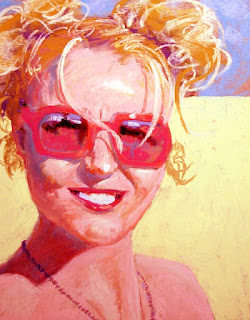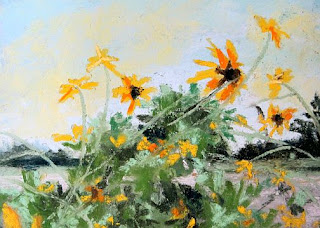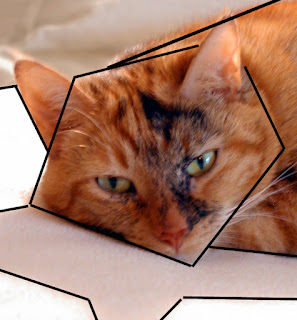 |
| Moody Sky, 8" x 10" |
Color is one of my favorite topics and I think this class was a blast! Above is the painting I did in class (not as a demo.) The challenge was to use a moody looking photograph and
enhance the feeling even more using color. It's not finished, but I think it already expresses a sense of foreboding that driving into a storm can bring. You can see the resource pic in the post before this one. I removed all the trees and made it into a sterile desert environment in order to enhance the feeling of exposure, and to remove the darkness of the trees themselves. This gives the sky all the power, since it contains the darkest darks, and creates a subtle warm color that counters the blues, greens and grays of the sky.
First I gave them a test.Feel free to print it and fill in the blanks. You might be surprised, but I also suspect you'll find some strong connections to color and emotion. No, it doesn't matter what the colors are, you can envision and red, yellow, blue, green, orange or purple you want to.
So, of those choices, what color is
innocent? Disgusted?Confused?Again, there are no right or wrong answers, but ask a couple of other people to fill in the blanks, too and see if there isn't some agreement. You might be surprised!
In order to further explain the link between color and mood I showed this:
You can see the hastily scrawled list of feelings on the left and these blocks of colors, which have no content whatsoever. There's no 'thing-ness' to get in the way. Take a minute to study each one and choose an emotion from the list that describes the mood created by it. There may be more than one mood, and there are no right or wrong answers, only your opinion. I think this shows you the power of color, independent of anything else. Here, it's all color. In most other compositions the content flavors the response.
For instance, here's my original painting:
I like the pink sunglasses, and used a light yellow and blue to express the beach, summer, sunlight. I wanted to give it a fun mood.
Notice how the shift in palette (made by Photoshopping the original) has enhanced the feeling of heat, as if the sun it too hot and this poor gal is getting beet red. The mood is still cheerful and upbeat, but we want her to get in out of the sun. It's
almost painful.
And now it reads completely differently. The blue shift has darkened it enough that we have the feeling it's wrong. It seems a little spooky and sinister. That's the power of color. She's still smiling. There's still a spot of sunlight and a cast shadow on her neck, the beach is still kind of yellow and the sky is blue--but the smile seems to be out of place.
We enjoyed a good discussion and shared our photos. We talked about how we could enhance the feeling we wanted to create. Here are some of the works in progress my students were doing. None of them is finished, of course, but they were looking quite good, I think.
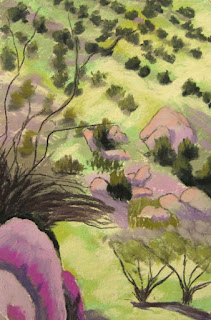 |
| Kris |
 |
| Carol |
 |
| Catherine |
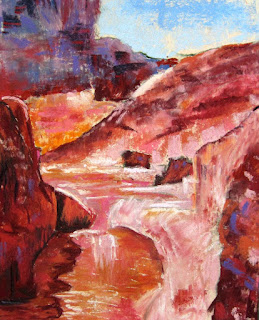 |
| Adriana |
I'll let you decide what you think the gals were expressing in these. It was a very fun experiment, and I think the paintings are strong statements about the emotive power of color.
Good job, gang! Keep going.
Deborah












